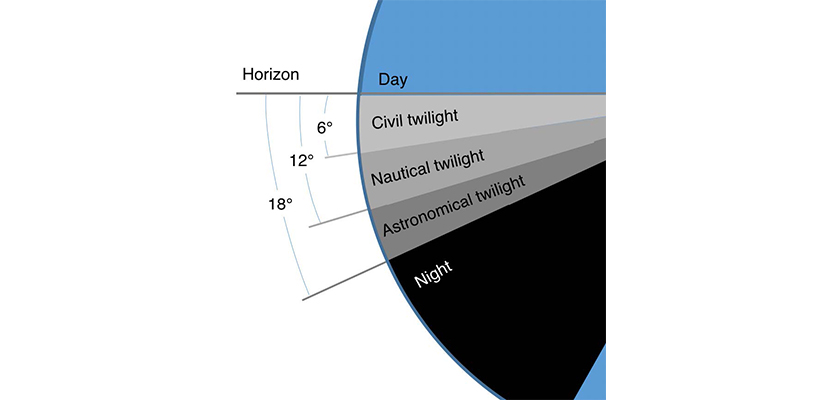



In 1913, George William Russell penned the poem titled “The Hour of Twilight.” It starts with a stunning description of twilight:
When the unquiet hours depart
And far away their tumults cease,
Within the twilight of the heart
We bathe in peace, are stilled with peace.
I wonder what twilight Mr. Russell was thinking about. Many of us enjoy the more peaceful hours as the sun is falling below the horizon. Is it dusk or is it twilight? It can be difficult to define exactly what is dusk and what is twilight. Let me see if I can help you with deciding which twilight time is your favorite.
Dusk is defined in the Merriam-Webster dictionary (online version of course) as the darker part of twilight, especially at night. This is confusing to me because the definition of dusk uses twilight as a reference. Merriam-Webster dictionary defines twilight as the light from the sky between full night and sunrise or between sunset and full night produced by diffusion of sunlight through the atmosphere and its dust.
As you know engineers like to have a little more precision than poets. Therefore, it is reassuring to know that there are actual values we can apply to twilight. In fact there are three different types of twilight; Civil, Nautical, and Astronomical
Briefly, sunset is defined in astronomy as the moment when the upper limb of the sun disappears below the horizon. This is the time when you sit on the beach in awe as the sun disappears and atmospheric refraction of the sunlight diffuses into brilliant shades of orange, red and even green.
Civil twilight begins when the sun has set and continues until the center of the star descends 6 degrees below the horizon. The term Civil Twilight was coined by a 18th century Swiss man named J.H Lambert, a mathematician, physicist, astronomer and philosopher. However, it is not clear why the term Civil was applied to this time of day. In any case, this is a time where there is enough light for us to still enjoy the outdoors without the aid of artificial lighting.
Nautical twilight is the second twilight phase. This is the time when the first bright starts begin to appear in the clear sky. This period is defined when the center of the sun is between 6 degrees and 12 degrees below the horizon. The term Nautical was applied to this time because this was when seafarers could spot stars to aid them in celestial navigation.
The final phase is astronomical twilight. This occurs when the sun is between 12 degrees and 18 degrees below the horizon. With the naked eye you are able to see most of the visible stars in the night. However, astronomers with telescopes still may be unable to see the dimmer stars, so they need to wait for nighttime, or when the sun is 18 degrees below the horizon. The night is short for them because at astronomical dawn they will have to close up shop. Would you like to be able to calculate twilight? You can use WAGO’s Solar Position Algorithm (SPA) to calculate the location of the sun with 0.0003° of accuracy.
Check it out at www.wago.com/us/renewable-energy-generation
Text: Charlie Norz, WAGO
Photos: WAGO